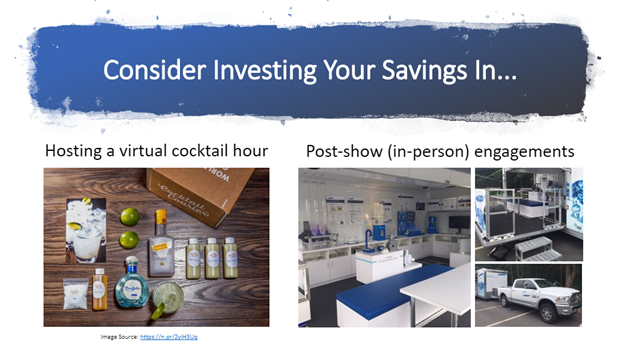Rome Was Not Built in a Day. Neither are Virtual Events.
If you’ve been following along chronologically in this blog series, you’ve read our introduction to virtual events, including an overview of objectives, audience, and technology considerations, and you’ve read through the details we’ve shared on the virtual event location, content types and considerations, communication tools and their not-so-traditional uses, as well as our insights into how to prove ROI.
Now, we want to take a moment in this last blog to talk about timelines. Because we get it; we’re all in the same boat. We’re all in uncharted waters, being asked to solve new problems and create new solutions—and we have to do it fast.
But as the saying goes, “Rome wasn’t built in a day.” Even though virtual events do not have the same building requirements as physical ones, there’s still a timeline to consider. Sure, it won’t follow the typical six months needed for a physical exhibit, but, creating a virtual event is not like flipping a switch.
We’re working with our vendors to create new services from their existing range of products on the fly. (Which is a good thing, by the way, because we’re all helping each other to pivot our offerings and our strategies in this ‘new normal.’) But we’re typically seeing and hearing an estimate of six to eight weeks for turnaround time from the moment content is received. And that’s a good thing, folks, because it gives you the time you need to market and promote your event and draw a crowd to your virtual space.
As illustrated below, what we’ve talked about so far in this blog series is what falls under the middle bucket here—your during-show efforts. From the development of your virtual space, to the content experiences and interactive activities, to the live chats and leave-behind downloadable content.

Let’s quickly touch upon marketing the event. Because you’re putting on your own event, you need to make sure you have a strong pre-event marketing campaign in place. There’s no show organization to rely on, so it’s important to create as many touch points as makes sense to your audience…and your budget.
Ah, the hot-word: Budget.
We realize virtual events have different costs than physical events. But, there is still a cost. Virtual events are developed with technology partners, web developers and app programmers, designers and writers, video producers and digital strategists…you get the point. So, there’s a lot of tech, and that comes at a price. Yes, it’s typically less than a physical event, but it tends to scale based on the same way as your physical event.
From a recent survey we conducted, a majority of companies pivoting to virtual events are planning to allocate somewhere between a quarter to a half of their budget to the virtual space. That’s a great start, and we suggest if you’re in a similar boat, that you take some of that cost savings from going virtual and reinvest and reallocate it to your marketing efforts.

Perhaps you want to mail your attendees some pre-event swag like a margarita making kit for the cocktail hour you’re going to host after that final presentation. Or, in our first whitepaper we discussed mobile marketing solutions—you could invest in some sort of trailer or RV you can take on the road to follow up with attendees as part of your post-event marketing.
Imagine setting up follow-up meetings with prospects and showing up to their facility for an in-person, small-group meeting where they come outside and demo your product! Instead of swiping through to spin around your product in 3D, they can literally pick up your product to spin it around to finally get that hands-on experience.
Not to mention, there’s a scalability factor. Your virtual event space is a website, it can be repurposed and reskinned for future events or to allow post-event access and use as a sales tool for quite some time. (Even that mobile marketing solution can be repurposed—you could even drive that RV right into a trade show floor when events do come back!)
The point is, virtual events do have a cost, but there is still cost savings you can take advantage of to make sure your event is successful, and your business goals met.
Ready to get your own virtual event rolling?